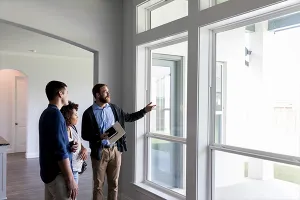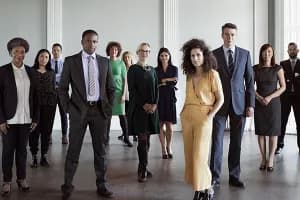
At the national level, housing affordability improved in October, according to NAR's Housing Affordability Index, as median family incomes rose and mortgage rates declined from a year earlier. Affordability rose above 100 for the third consecutive month, to 106.2. This means that the typical family earned 106.2% of the qualifying income needed to afford the median-priced home.
Compared to one year ago, affordability increased by 3.6% in October, even though the monthly mortgage payment was higher by 0.2%. Lower mortgage rates and strong income growth offset higher prices in October. Specifically, the median existing-home sales price increased 2.2% ($420,600) compared to one year ago ($411,700). However, the median family income rose by 3.8% and mortgage rates were down 18 basis points from one year ago (one percentage point equals 100 basis points). Specifically, the effective 30-year fixed mortgage rate was 6.33% this October compared to 6.51% one year ago.
Compared to the prior month, the monthly mortgage payment decreased by 0.3%, while the median price of single-family homes rose modestly by 0.7%. The monthly mortgage payment decreased $7 from last month.




The national index is currently above 100, which means that the typical family earns an income more than the income needed to afford to buy a median-priced home. An index above 100 means that a family with the median income has more than the income required to afford a median-priced home. The income required to afford a mortgage, or the qualifying income, is the income needed so that mortgage payments on a 30-year fixed mortgage loan with 20% down payment account for 25% of family income.
The most affordable region was the Midwest, with an index value of 134.4 (median family income of $103,436 with the qualifying income of $76,944). The least affordable region remained the West, where the index was 75.2 (median family income of $114,914 and the qualifying income of $152,784). The South was the second-most affordable region, with an index of 112.1 (median family income of $98,784 and qualifying income of $88,128). The Northeast was the second-most unaffordable region, with an index of 93.7 (median family income of $115,697, qualifying income of $123,504).



Housing affordability improved in three of the four regions from a year ago. The South region had the largest gain of 5.4%, followed by the West with 5.3%. The Midwest had the smallest incline (0.9%) and the Northeast had the only decline, at 1.4%.
Affordability increased in three of the four regions from last month. The Midwest had the largest increase of 1.5%, followed by the Northeast at 1.1%. The South recorded a modest gain of 0.7%, while the West recorded the only decline of 0.3%.
Compared to one year ago, the monthly mortgage payment rose to $2,089 from $2,084, an increase of 0.2 %. A year ago, the monthly mortgage payment increased $5. The annual mortgage payment as a percentage of income decreased to 23.5% this October from a year ago (24.4%).
Regionally, the West has the highest mortgage payment to income share at 33.2% of income. The Northeast had the second-highest share at 26.7%, followed by the South at 22.3%. The Midwest had the lowest mortgage payment-to-income ratio at 18.6%. Mortgage payments are not burdensome if they are no more than 25% of income.
Qualifying incomes have continued to decline, providing more opportunities for potential home buyers. Mortgage rates have been trending downward for four consecutive months. Median family incomes are currently outpacing home price growth. These key factors have helped improve affordability in the month of October. This week, the Mortgage Bankers Association reported that mortgage applications increased by 3.1% from the previous week.
The Housing Affordability Index calculation assumes a 20% down payment and a 25% qualifying ratio (principal and interest payment to income). See further details on the methodology and assumptions behind the calculation.









